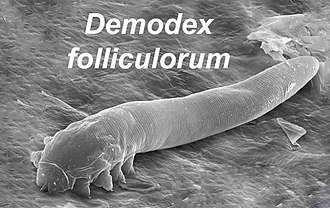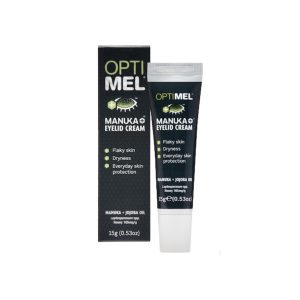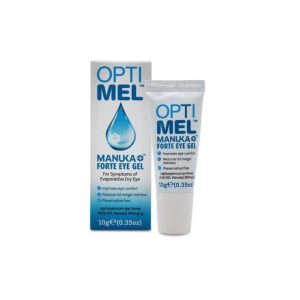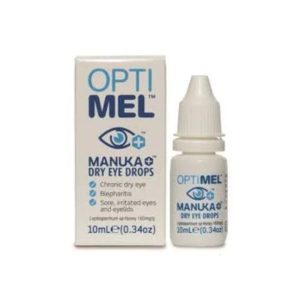Are you experiencing persistent dryness, irritation, or discomfort in your eyes? If yes, you could be among the many people suffering from a chronic dry eye condition that may be linked to Demodex mites. These tiny, eight-legged organisms are a natural part of the human skin microbiome, particularly around the eye and eyelid regions. When their population increases beyond normal levels, they can induce inflammation and exacerbate the symptoms of dry eye syndrome, resulting in significant discomfort and distress.
If you’ve been grappling with ongoing, unexplained dry eye issues, it’s crucial to explore whether Demodex mites might be contributing to your symptoms. In this comprehensive guide, we will help you identify the signs of a Demodex infestation, explain how these mites relate to dry eye disease, and outline effective treatment options to manage their population and alleviate your discomfort effectively.

Recognizing the Distinct Symptoms of Demodex Blepharitis
Individuals suffering from Demodex Blepharitis or an overpopulation of these mites often experience a range of distinctive symptoms. Common signs include:
- Burning, stinging, or gritty sensations in the eyes, especially noticeable as the day progresses.
- Unexplained excessive tearing or watery eyes that are not related to allergies.
- Red, inflamed eyelids, along with irritation of the skin surrounding the eyes.
- Crusty, dandruff-like buildup along the lashes and eyelid margins, often appearing as collarettes.
- Extreme sensitivity to light, creating a constant squinting sensation.
- Episodes of blurred vision that may fluctuate throughout the day.
Many individuals endure these dry eye symptoms for years without realizing that an infestation of Demodex mites could be a significant underlying factor. Identifying these symptoms is a crucial step towards effectively addressing the root cause of your discomfort.

Exploring How Demodex Mites Lead to Dry Eye Symptoms
Wondering how these minuscule creatures can result in such troubling dry eye symptoms? Demodex mites primarily feed on the oils and cells present on the skin, particularly within the hair follicles of your eyelashes. As they consume these materials, they excrete waste products, lay eggs, and leave behind remnants of deceased mites, which accumulate along the eyelid margins. This accumulation forms a thick layer of debris and a bacterial biofilm that can obstruct the delicate oil glands essential for maintaining optimal eye health.
When these oil glands are unable to release adequate oils, dry patches can form rapidly on the eye surface. This oily tear film is vital in preventing the swift evaporation of the watery tears that keep our eyes lubricated and comfortable. The inflammation resulting from the blockage can exacerbate eye irritation, redness, and the uncomfortable gritty sensation typically associated with dry eye conditions, making relief even more challenging.
Understanding the Life Cycle of Demodex Mites for Optimal Treatment
Grasping the life cycle of Demodex mites is essential for implementing effective treatment strategies. These mites develop through distinct stages: egg, larva, nymph, and adult, completing their life cycle in approximately 14 to 21 days. They exhibit heightened activity during the night, leaving their hair follicles to mate and deposit new eggs on the skin’s surface.
This nocturnal behavior indicates that the most opportune time to apply Demodex treatments is during the evening, just before bedtime. By targeting the mites when they are most active, you can significantly enhance the effectiveness of your treatment regimen. However, due to their rapid reproductive capabilities, any surviving mites can quickly repopulate, underscoring the necessity for continuous treatment over several weeks or even months to achieve lasting relief.
Effective Strategies for Managing Demodex-Related Dry Eye Symptoms
If your optometrist confirms a high count of Demodex mites through eyelash sampling or microscopic examination, they may recommend various treatment options to combat the infestation:
1. Harnessing Tea Tree Oil Eyelid Wipes and Scrubs for Remarkable Relief
Products infused with tea tree oil possess potent antimicrobial and antiparasitic properties, making them highly effective in eradicating mites. These formulations can eliminate surface mites, dissolve collarettes produced by these pests, and help extract concealed mites, making them more susceptible to treatment.
While tea tree oil is efficient against mites, it may cause stinging upon application and has the potential to be cytotoxic to healthy cells, which could inflame and worsen symptoms for certain patients. However, with regular application of tea tree oil eyelid wipes or scrubs before bedtime, the mite population can gradually diminish. A notable example of a powerful tea tree oil treatment is OcuSoft Oust Foam, which is particularly effective in managing blepharitis primarily caused by Demodex mites.
2. Utilizing Gentle Hypochlorous Acid Lid Hygiene Sprays for Safe Eye Care
Hypochlorous acid is a naturally occurring substance produced by our immune system, known for its effectiveness as an antimicrobial agent. This compound is gentle on the eyes, does not induce stinging, and is entirely safe for our cells.
Disinfecting lid sprays and cleansing foams that contain hypochlorous acid not only eliminate mites but also contribute to reducing inflammation and alleviating uncomfortable symptoms. Applying these solutions to the lash lines before bed can effectively eradicate mites and their debris. Many of these products carry a distinct odor reminiscent of chlorinated pool water. Popular hypochlorous acid-based solutions include Ocusoft Hypochlor Spray and Avenova.
Among these, Ocusoft Hypochlor Foam is frequently recommended due to its superior value and extended shelf life after opening, making it a practical choice for ongoing management of Demodex-related issues.
3. Exploring the Benefits of Manuka Honey Solutions for Eye Health
Recent studies suggest that Manuka Honey solutions may be as effective as 50% tea tree oil against Demodex, although further research is needed in this area. While it may cause a slight sting upon application, Manuka Honey is generally less irritating than tea tree oil and has shown excellent efficacy against other forms of blepharitis. This natural solution is non-cytotoxic and less likely to provoke inflammation in the eyelids.
Many patients report that any initial sting is well worth it, as they often experience significant relief afterward. Manuka Honey solutions are available in gel form (such as Optimel Forte, which is more effective but may sting more) and as drops (like Optimel Drops, which are easier to administer and cause less stinging).
4. Addressing Severe Demodex Infestations with Oral Anti-Parasitics
In cases where Demodex overpopulation is particularly severe and persistent, healthcare professionals may consider prescribing oral antiparasitic medications. For example, formulations such as Ivermectin in pill form have shown effectiveness in managing these infestations. Additionally, weekly doses of oral tea tree oil supplements taken over several months can help keep mite levels under control and provide longer-lasting relief.
5. Exploring Professional Treatments for Advanced Demodex Management
Some eye clinics offer specialized in-office treatments specifically designed for Demodex management. These treatments utilize targeted products such as Oust Demodex Cleanser Swabstix or a hand-held electric brush known as BlephEx.
The Oust Demodex Cleanser Swabstix provides targeted treatment options that can effectively help mitigate the effects of these troublesome mites.
The Article: Demodex Mites Linked to Chronic Dry Eye Issues first appeared on https://writebuff.com.
The Article Demodex Mites and Their Connection to Chronic Dry Eye Was Found On https://limitsofstrategy.com





This is such an interesting topic! I’ve definitely been there with persistent eye discomfort. It’s puzzling how something so small, like Demodex mites, can wreak such havoc. When I first started experiencing dry eyes, I thought it was just allergy-related or due to too much screen time. I had no idea that mites might be a player in all this.
I can really relate to your experience with persistent eye discomfort. It’s almost surprising how the little things—like those tiny Demodex mites—can have such a big impact on our everyday lives. So many of us often chalk up dry eyes to allergies or too much screen time, which makes sense given how often we’re glued to our devices these days. It’s that kind of connection we all have with screens that can really mess with our eyes, but then there’s this whole hidden world of tiny organisms like Demodex that can fly under the radar.